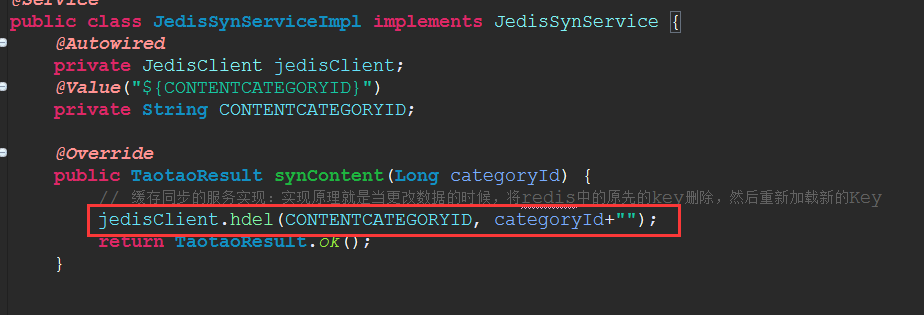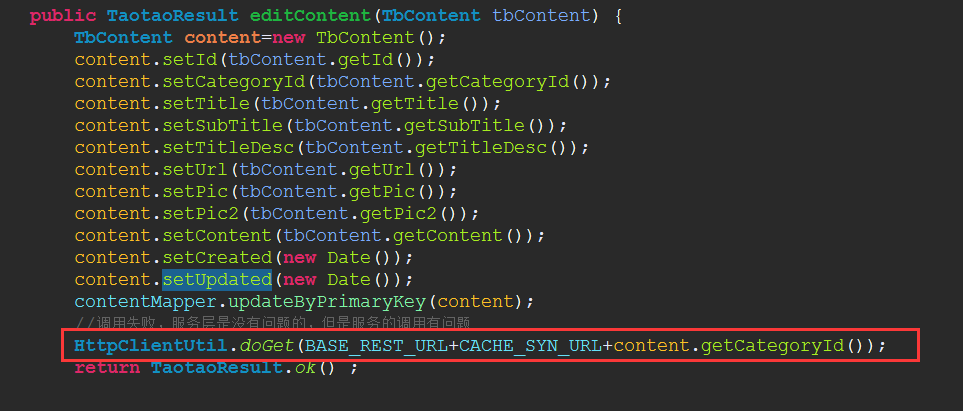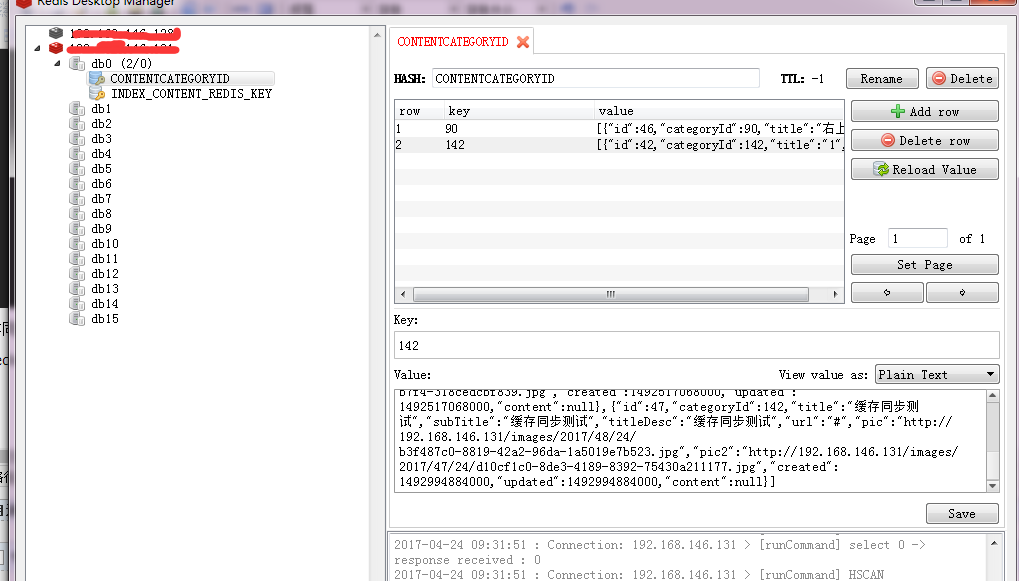redis作为缓存的作用就是减少对数据库的访问压力,当我们访问一个数据的时候,首先我们从redis中查看是否有该数据,如果没有,则从数据库中读取,将从数据库中读取的数据存放到缓存中,下次再访问同样的数据的是,还是先判断redis中是否存在该数据,如果有,则从缓存中读取,不访问数据库了。
举个例子:根据内容分类id访问内容:
package com.taotao.rest.service.impl;
import java.util.ArrayList;import java.util.List;import org.apache.commons.lang3.StringUtils;import org.springframework.beans.factory.annotation.Autowired;import org.springframework.beans.factory.annotation.Value;import org.springframework.stereotype.Service;import com.taotao.commonEntity.JsonUtils;import com.taotao.commonEntity.TaotaoResult;import com.taotao.mapper.TbContentMapper;import com.taotao.pojo.TbContent;import com.taotao.pojo.TbContentExample;import com.taotao.pojo.TbContentExample.Criteria;import com.taotao.rest.dao.JedisClient;import com.taotao.rest.service.ContentService;import redis.clients.jedis.Jedis;//首页大广告位的获取服务层信息@Servicepublic class ContentServiceImpl implements ContentService { @Value("${CONTENTCATEGORYID}") private String CONTENTCATEGORYID; @Autowired private TbContentMapper contentMapper; @Autowired private JedisClient jedisClient; @Override public List<TbContent> getContentList(Long categoryId) { /*一般第一次访问的时候先从数据库读取数据,然后将数据写入到缓存,再次访问同一内容的时候就从缓存中读取,如果缓存中没有则从数据库中读取 所以我们添加缓存逻辑的时候,从数据库中将内容读取出来之后,先set入缓存,然后再从缓存中添加读取行为,如果缓存为空则从数据库中进行读取 */ //从缓存中获取值 String getData = jedisClient.hget(CONTENTCATEGORYID, categoryId+""); if (!StringUtils.isBlank(getData)) { List<TbContent> resultList= JsonUtils.jsonToList(getData, TbContent.class); return resultList; } TbContentExample example=new TbContentExample(); Criteria criteria = example.createCriteria(); criteria.andCategoryIdEqualTo(categoryId); List<TbContent> list = contentMapper.selectByExample(example); //向缓存中放入值 String jsonData = JsonUtils.objectToJson(list); jedisClient.hset(CONTENTCATEGORYID, categoryId+"",jsonData); return list; }}所以这里就是写逻辑代码的时候,在业务功能处,从缓存中读取-----从db中读取----将数据写入缓存。
3.针对上面出现的问题:
当我们后台数据库中内容修改之后,因为缓存中的内容没有修改,我们访问的时候都是先访问缓存,所以即使数据库中的内容修改了,但是页面的显示还是不会改变的。因为缓存没有更新,所以这就涉及到缓存同步的问题:即数据库修改了内容与缓存中对应的内容同步。
缓存同步的原理:就是将redis中的key进行删除,下次访问的时候,redis中没有改数据,则从DB进行查询,再次更新到redis中。
我们可以写一个缓存同步的服务:


缓存同步除了查询是没有涉及到同步问题,增加删除修改都会涉及到同步问题。
只需要在后台进行CRUD的地方添加调用该缓存同步的服务即可:

5.redis客户端jedis的使用:
